Healthcare Provider Update: For the University of California, the primary healthcare provider is Kaiser Permanente, which is part of a network that offers comprehensive medical services to faculty and staff. They participate in programs designed to provide quality health care as well as manage costs effectively. Looking ahead to 2026, healthcare costs for University of California employees are projected to rise significantly. Premiums in the Affordable Care Act (ACA) marketplace are expected to increase sharply, with some states anticipating hikes exceeding 60%. This situation may result in more than 22 million marketplace enrollees facing increases in their out-of-pocket premiums by over 75% due to the potential expiration of enhanced federal subsidies. The combination of escalating medical costs and these subsidy changes will likely strain budgets and access, prompting employees to reevaluate their healthcare options for the upcoming year. Click here to learn more

With 2021 wrapped up and going into the new year, the IRS just released Revenue Procedure 2021-45 and Notice 2021-61 which detail the tax changes and cost of living adjustments for 2022. The main points of this new release that will most likely affect University of California employees would be:
- This year, the tax filing deadline is on April 18, instead of the typical April 15.
- The standard deduction for married couples filing jointly for tax year 2022 rises to $25,900 up $800 from the prior year.
- For single taxpayers and married individuals filing separately, the standard deduction rises to $12,950 for 2022, up $400, and for heads of households, the standard deduction will be $19,400 for tax year 2022, up $600.
Also, the personal exemption for tax year 2022 remains at 0, as it was for 2021. This elimination of the personal exemption was a provision in the Tax Cuts and Jobs Act.
If you experienced a job change, retirement or lapse in employment from University of California, the “lookback” rule may be an important option to consider when filing taxes this year. You’ll also have the option to use your 2019 earned income for your 2021 return thanks to changes from the American Rescue Plan Act. This rule is mainly used for calculation of the Earned Income Tax Credit and the Child Tax Credit.
Remote workers employed by University of California might face double taxation on state taxes. Due to the pandemic, many employees moved back home which could have been outside of the state where they were employed. Last year, some states had temporary relief provisions to avoid double taxation of income, but many of those provisions have expired. There are only six states that currently have a ‘special convenience of employer’ rule: Connecticut, Delaware, Nebraska, New Jersey, New York, and Pennsylvania. If you work remotely for University of California, and if you don't currently reside in those states, consult with your tax advisor if there are other ways to mitigate the double taxation.
Retirement account contributions: Contributing to your University of California 401k plan can cut your tax bill significantly, and the amount you can save has increased for 2022. In 2022, the IRS has raised the contribution limit for a 401k to $20,500 - up by $1,000. Meanwhile, University of California workers who are older than 50 years old are eligible for an extra catch-up contribution of $6,500.
There are important changes for the Earned Income Tax Credit (EITC) that you, as a taxpayer employed by University of California, should know:
- The income threshold has been increased for single filers with no children; the American Rescue Plan Act temporarily boosted it from $543 to $1,502 in 2021; this expansion has not been carried over to the 2022 tax year.
- Married taxpayers filing separately can qualify: You can claim the EITC as a married filing separately if you meet other qualifications. This wasn't available in previous years.
Increased deduction for cash charitable contributions: In years past, the threshold was $300 for both single and joint filers, but in 2022 that changed to $300 for single filers and up to $600 for joint filers.
Child Tax Credit changes:
- A $2,000 credit per dependent under age seventeen..
- Income thresholds of $400,000 for married couples and $200,000 for all other filers (single taxpayers and heads of households).
- A 70 percent, partial refundability affecting individuals whose tax bill falls below the credit amount.
2022 Tax Brackets
-png.png?width=575&name=image%20(18)-png.png)
Inflation reduces purchasing power over time as the same basket of goods will cost more as prices rise. In order to maintain the same standard of living throughout your retirement after leaving University of California, you will have to factor rising costs into your plan. While the Federal reserve strives to achieve 2% inflation rate each year, in 2021 that rate shot up to 7% a drastic increase from 2020’s 1.4%. While prices as a whole have risen dramatically, there are specific areas to pay attention to if you are nearing or in retirement from University of California, like healthcare. Many University of California corporate retirees depend on Medicare as their main health care provider and in 2022 that healthcare out-of-pocket premium is set to increase by 14.5%. In addition to Medicare increases, the cost of over-the-counter medications is also projected to increase by at least 10%. The Employee Benefit Research Institute (ERBI) found in their 2022 report that couples with average drug expenses would need $296,000 in savings just to cover those expenses in retirement. It is crucial to take all of these factors into consideration when constructing your holistic plan for retirement from University of California.
*Source: IRS.gov, Yahoo, Bankrate
Featured Video
Articles you may find interesting:
- Corporate Employees: 8 Factors When Choosing a Mutual Fund
- Use of Escrow Accounts: Divorce
- Medicare Open Enrollment for Corporate Employees: Cost Changes in 2024!
- Stages of Retirement for Corporate Employees
- 7 Things to Consider Before Leaving Your Company
- How Are Workers Impacted by Inflation & Rising Interest Rates?
- Lump-Sum vs Annuity and Rising Interest Rates
- Internal Revenue Code Section 409A (Governing Nonqualified Deferred Compensation Plans)
- Corporate Employees: Do NOT Believe These 6 Retirement Myths!
- 401K, Social Security, Pension – How to Maximize Your Options
- Have You Looked at Your 401(k) Plan Recently?
- 11 Questions You Should Ask Yourself When Planning for Retirement
- Worst Month of Layoffs In Over a Year!
- Corporate Employees: 8 Factors When Choosing a Mutual Fund
- Use of Escrow Accounts: Divorce
- Medicare Open Enrollment for Corporate Employees: Cost Changes in 2024!
- Stages of Retirement for Corporate Employees
- 7 Things to Consider Before Leaving Your Company
- How Are Workers Impacted by Inflation & Rising Interest Rates?
- Lump-Sum vs Annuity and Rising Interest Rates
- Internal Revenue Code Section 409A (Governing Nonqualified Deferred Compensation Plans)
- Corporate Employees: Do NOT Believe These 6 Retirement Myths!
- 401K, Social Security, Pension – How to Maximize Your Options
- Have You Looked at Your 401(k) Plan Recently?
- 11 Questions You Should Ask Yourself When Planning for Retirement
- Worst Month of Layoffs In Over a Year!
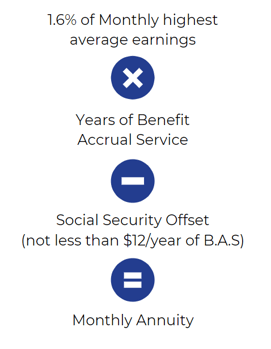
Highest Average Earnings is the monthly average of your regular earnings for the 36 consecutive months in which they’re the highest.
In most cases, this will be the sum of your last 36 months divided by 36.
The applicable interest rate is a separate average of each of the three segment rates for the fifth, fourth and third months preceding your annuity start date. The three segment rates are calculated by the IRS according to regulations that are also part of the Pension Protection Act of 2006 and reflect the yields of short-, mid-, and long-term corporate bonds. (Note: Chevron also has Legacy Unocal and Legacy Texaco Retirement Plans)
Different Plans
Similar to Chevron, AT&T has many different plans available. With AT&T, they have different pension plan formulas for management & non-management. Lets look at a sample non-management plan.
AT&T non-management employees have their own Craft/non-management pension plan. Let's take a look at a pension example for a gentleman by the name of Joe Smith who is hourly and using the Craft/non-management pension plan.
In 1990, Joe is hired by AT&T and participates in the Craft Pension Plan:
Craft Pension Plan
-
Craft has a defined benefit plan that uses pension bands.
-
A pension band determines your benefits based on your job title/grade level/occupation.
- Joe will receive a monthly dollar amount into his account for each year of service.
-
Joe's benefit (pension band may change yearly).
-
A pension band determines your benefits based on your job title/grade level/occupation.
Rising Interest Rates e-book
https://www.irs.gov/newsroom/irs-provides-tax-inflation-adjustments-for-tax-year-2022
https://news.yahoo.com/taxes-2022-important-changes-to-know-164333287.html
https://www.nerdwallet.com/article/taxes/federal-income-tax-brackets
https://www.the-sun.com/money/4490094/key-tax-changes-for-2022/
https://www.bankrate.com/taxes/child-tax-credit-2022-what-to-know/
How does the University of California Retirement Plan (UCRP) define service credit for members, and how does it impact retirement benefits? In what ways can University of California employees potentially enhance their service credit, thereby influencing their retirement income upon leaving the University of California?
Service Credit in UCRP: Service credit is essential in determining retirement eligibility and the amount of retirement benefits for University of California employees. It is based on the period of employment in an eligible position and covered compensation during that time. Employees earn service credit proportionate to their work time, and unused sick leave can convert to additional service credit upon retirement. Employees can enhance their service credit through methods like purchasing service credit for unpaid leaves or sabbatical periods(University of Californi…).
Regarding the contribution limits for the University of California’s defined contribution plans, how do these limits for 2024 compare to previous years, and what implications do they have for current employees of the University of California in their retirement planning strategies? How can understanding these limits lead University of California employees to make more informed decisions about their retirement savings?
Contribution Limits for UC Defined Contribution Plans in 2024: Contribution limits for defined contribution plans, such as the University of California's DC Plan, often adjust yearly due to IRS regulations. Increases in these limits allow employees to maximize their retirement savings. For 2024, employees can compare the current limits with previous years to understand how much they can contribute tax-deferred, potentially increasing their long-term savings and tax advantages(University of Californi…).
What are the eligibility criteria for the various death benefits associated with the University of California Retirement Plan? Specifically, how does being married or in a domestic partnership influence the eligibility of beneficiaries for University of California employees' retirement and survivor benefits?
Eligibility for UCRP Death Benefits: Death benefits under UCRP depend on factors like length of service, eligibility to retire, and marital or domestic partnership status. Being married or in a registered domestic partnership allows a spouse or partner to receive survivor benefits, which might include lifetime income. In some cases, other beneficiaries like children or dependent parents may be eligible(University of Californi…).
In the context of retirement planning for University of California employees, what are the tax implications associated with rolling over benefits from their defined benefit plan to an individual retirement account (IRA)? How do these rules differ depending on whether the employee chooses a direct rollover or receives a distribution first before rolling it over into an IRA?
Tax Implications of Rolling Over UCRP Benefits: Rolling over benefits from UCRP to an IRA can offer tax advantages. A direct rollover avoids immediate taxes, while receiving a distribution first and rolling it into an IRA later may result in withholding and potential penalties. UC employees should consult tax professionals to ensure they follow the IRS rules that suit their financial goals(University of Californi…).
What are the different payment options available to University of California retirees when selecting their retirement income, and how does choosing a contingent annuitant affect their monthly benefit amount? What factors should University of California employees consider when deciding on the best payment option for their individual financial situations?
Retirement Payment Options: UC retirees can choose from various payment options, including a single life annuity or joint life annuity with a contingent annuitant. Selecting a contingent annuitant reduces the retiree's monthly income but provides benefits for another person after their death. Factors like age, life expectancy, and financial needs should guide this decision(University of Californi…).
What steps must University of California employees take to prepare for retirement regarding their defined contribution accounts, and how can they efficiently consolidate their benefits? In what ways does the process of managing multiple accounts influence the overall financial health of employees during their retirement?
Preparation for Retirement: UC employees nearing retirement must evaluate their defined contribution accounts and consider consolidating their benefits for easier management. Properly managing multiple accounts ensures they can maximize their income and minimize fees, thus contributing to their financial health during retirement(University of Californi…).
How do the rules around capital accumulation payments (CAP) impact University of California employees, and what choices do they have regarding their payment structures upon retirement? What considerations might encourage a University of California employee to opt for a lump-sum cashout versus a traditional monthly pension distribution?
Capital Accumulation Payments (CAP): CAP is a supplemental benefit that certain UCRP members receive upon leaving the University. UC employees can choose between a lump sum cashout or a traditional monthly pension. Those considering a lump sum might prefer immediate access to funds, but the traditional option offers ongoing, stable income(University of Californi…)(University of Californi…).
As a University of California employee planning for retirement, what resources are available for understanding and navigating the complexities of the retirement benefits offered? How can University of California employees make use of online platforms or contact university representatives for personalized assistance regarding their retirement plans?
Resources for UC Employees' Retirement Planning: UC offers extensive online resources, such as UCnet and UCRAYS, where employees can manage their retirement plans. Personalized assistance is also available through local benefits offices and the UC Retirement Administration Service Center(University of Californi…).
What unique challenges do University of California employees face with regard to healthcare and retirement planning, particularly in terms of post-retirement health benefits? How do these benefits compare to other state retirement systems, and what should employees of the University of California be aware of when planning for their medical expenses after retirement?
Healthcare and Retirement Planning Challenges: Post-retirement healthcare benefits are crucial for UC employees, especially as healthcare costs rise. UC’s retirement health benefits offer significant support, often more comprehensive than other state systems. However, employees should still prepare for potential gaps and rising costs in their post-retirement planning(University of Californi…).
How can University of California employees initiate contact to learn more about their retirement benefits, and what specific information should they request when reaching out? What methods of communication are recommended for efficient resolution of inquiries related to their retirement plans within the University of California system?
Contacting UC for Retirement Information: UC employees can contact the UC Retirement Administration Service Center for assistance with retirement benefits. It is recommended to request information on service credits, pension benefits, and health benefits. Communication via the UCRAYS platform ensures secure and efficient resolution of inquiries(University of Californi…).
/General/General%201.png?width=1280&height=853&name=General%201.png)





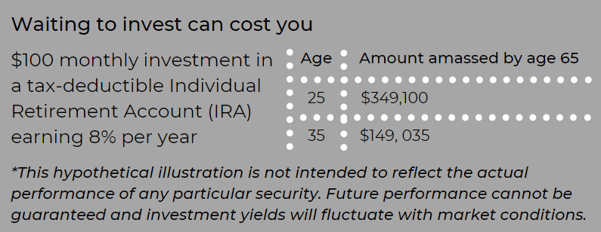

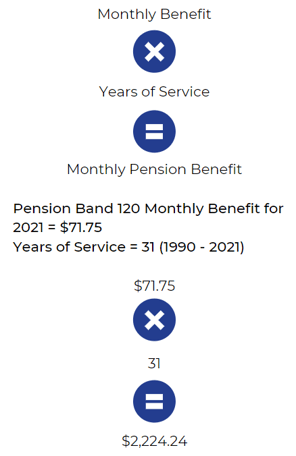

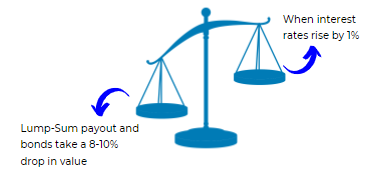



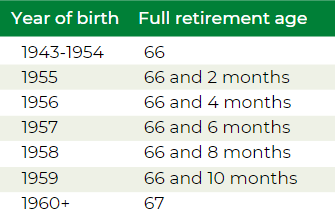

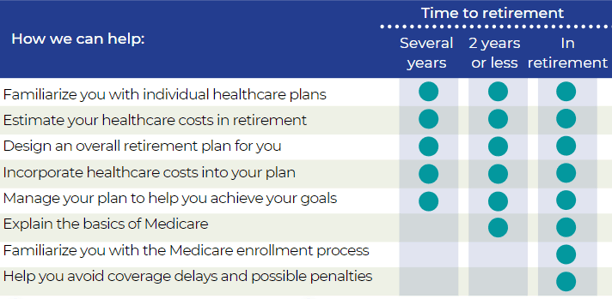







-2.png?width=300&height=200&name=office-builing-main-lobby%20(52)-2.png)









.webp?width=300&height=200&name=office-builing-main-lobby%20(27).webp)


-2.png)









.webp)